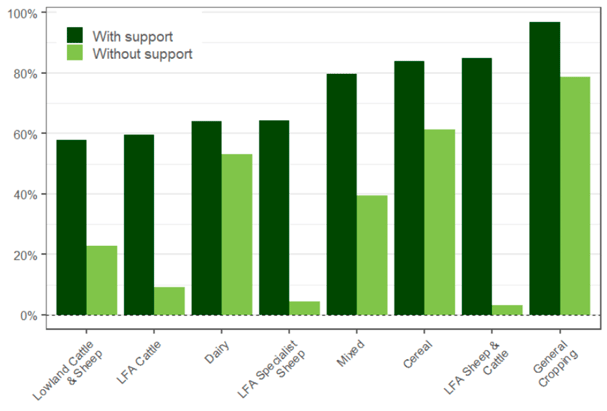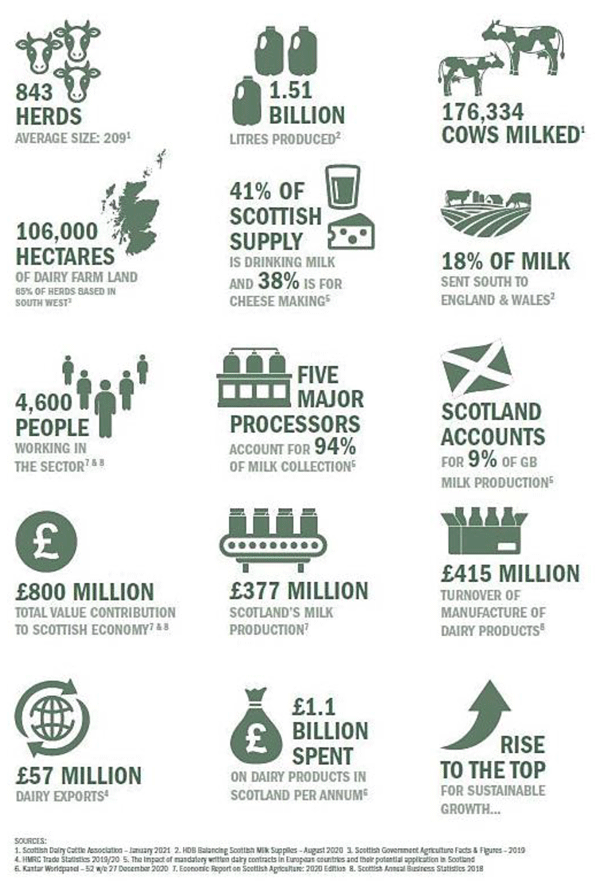Dairy Sector Climate Change Group: report
Report from the Dairy Sector Climate Change Group, one of the farmer-led groups established to develop advice and proposals for the Scottish Government. It focusses on how to cut emissions and tackle climate change, something that was re-emphasised in the updated Climate Change Plan.
4. The Dairy Sector in Scotland
In 2019, there were 843 dairy farms in Scotland with a herd of 50 or more dairy cattle. More than a quarter of holdings have 150+ cows.[6] Dairy products (excluding dairy beef) accounted for 11% of agricultural output, mostly in sourthern Scotland with a value of £377 million. The majority of holdings (74%) are located in designated Less Favoured Areas (LFA).
Around 50% of dairy farms in 2018-19 returned a profit without support payments (albeit that profit, on average, was just £26,400 per holding). Even with support payments, only 60% were profitable. While the dairy sector is proportionately less reliant on support than other livestock sectors, the profitablility is still not high enough across the sector for many farmers to be in a position to invest significantly in technology or innovative management techniques without further public support.

Dairy products are a rich source of essential nutrients that contribute to a healthy and nutritious diet. As a source of protein, milk has the lowest GHG intensity of all meat, meat products and fish products (kg CO2e/kg protein).[8] Scotland has some of the best milk fields in the world driven by an ideal climate, good farming practice, investment in on farm technology adoption and innovation[9], producing 1.5bn litres milk in 2019/20. Average Scottish dairy herds are the largest in the UK and the highest average yields.[10] As well as milk, dairy herds also produce over a quarter of Scotland's beef[11], through beef cross calves and cull cows, which has half the global warming potential of beef from the beef herd[12].
As a sector therefore, dairy delivers multiple public benefits but there is no doubt that it could do so in a more climate friendly way and with the right policy, support and funding framework.

Contact
There is a problem
Thanks for your feedback